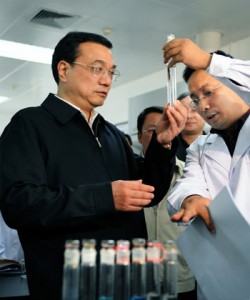25
Nov 2015
CHINA ON ITS R&D INVESTMENT
China has already overtaken the EU and 1 rank below the US in its R&D spending this year.
The research and development budgets in Europe and America have consumed the weight of advanced economies in science and technology research, patent citations and scientific publications, leaving China on track to be the world’s top R&D spender by 2019.
The reason why China intensely focus in its R&D is driven by economic dynamism, its long-term commitment to science and technology innovation, and its focus on quality, not quantity and low price anymore.

China has the ambition to spend 2.5% of gross domestic product, or GDP, on research by 2020 – and already spent 1.98% in 2012, the period under review. It;s not the only country in Asia that has been increasing spending on research and development. South Korea has superseded Israel as the world’s most R&D intensive country, spending a whopping 4.36% of GDP on research and development. Other high performers in Asia included Japan at 3.35% and Chinese Taipei at 3.06%.
R&D in Universities
The shift in research leadership is also apparent in patent citations and publications. The share of the United States and Japan in total world patents and scientific publications is on the decline, slowly giving way to science and technology production by the BRICS countries.
According the OECD report, in the decade since 2002, the growth of the science base in the United States and the European Union has been driven by universities, which have seen a robust increase in their expenditures. But, in China, the growth of scientific activity has been driven by public research institutes, in particular by large investments by the Chinese Academy of Sciences. There are notable structural differences in countries’ public research systems.
The Effort to Boost R&D
While China is ascending the global R&D ladder, it has work to do on improving the quality of its science, technology and innovation products. China has the world’s largest pool of human resources for science and technology but the tertiary-qualified share of the population remains extremely low. China still lacks world-class researchers, compared to the United States which has the world’s ‘largest and strongest science base’. The quality of Chinese science is still behind the world average, which is reflected by citation indicators and the share of PhDs among researchers.

In Japan, in order to enhance its research capabilities, Japan has established a program that aims to provide young researchers with career prospects and ensure full employment of science and technology doctorate holders.
Other countries with similar programs include Austria, Britain, Canada, Denmark, France and Germany, while Norway has new measures to strengthen the position of women in academia.
The Result of China’s R&D Investment
The result is not really satisfying. China’s quality is still lag behind developed countries instead, which only spend 3 to 4 percent of their GDP on R&D.
It’s ok, China, don’t give up! Still long way to go 
“Be less curious of people and more curious about ideas – Marie Curie”
Adapted from University World News































